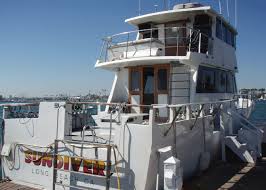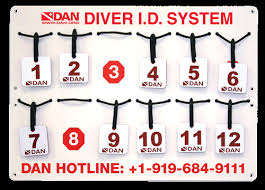Back
in 2015 we wrote a little post about the Tribord Easybreath full-face
snorkel mask. The advertising for this science fiction style snorkel
mask claimed that the Easybreath, with its revolutionary design,
would open up the underwater world to all those people who didn’t
like getting their faces wet or had difficulty breathing through
their mouths. The mask's anti-fogging system would also end the
niggling problem of having your vision obscured at inopportune
moments and thus you'd never have to learn how to clear your mask.
The Easybreath was, in essence, the answer to all those snorkelling
problems that no one knew existed. Never again would you have to pack
a separate snorkel and mask into your already overweight luggage, the
Easybreath was an all in one. No more would you have to worry about
your snorkel flooding as the Easybreath had a valve that stopped
water entering. Never again would you have to worry about learning
that most difficult of tasks - breathing through your mouth. And
never again would that nasty, salty water have to touch your face. A
great product all round then?
Err....
No! As we and a great many others pointed out at the time, the
Easybreath is not revolutionary. In fact it is a step backward.
Full-face snorkel masks have been around since the 1950's and all of
them suffered from a shared flaw, they were rubbish. Let's explain.
Firstly,
having your nose cocooned in a full-face design meant that you
couldn’t pinch it and therefore couldn't equalise pressure. Diving
down even a few metres meant your ears would explode. Then there's
the fact that full-face masks have large air volumes by design, so if
you did manage to survive your ears exploding two metres down, the
air in the mask would compress your face to such a degree that when
you surfaced you'd look like Quasimodo's uglier sibling. This means
that all full-face masks limit the wearer to simply bobbing about on
the surface like a piece of driftwood.
Secondly,
all masks are prone to flooding. Whether it's from a seal failure or
from being dislodged by wave action or even being bumped by another
snorkeller's fin, the risk of water entering the mask is inherent.
Snorkels can fail as well. Heavy waves can flood or dislodge them and
valves can stick.
With
a traditional mask and snorkel this isn't really a problem as your
mouth and eyes are separated. But with the full-face design the
problem is compounded. If water enters the mask in any real quantity,
your breathing and vision are compromised simultaneously. Not a
pretty prospect for those people who, as the advertising says, are
uncomfortable with getting their face wet. Of course you could say
that even this isn't a problem, if water gets in, just stand up and
take the mask off. But, what if you can't stand up? What if you have
happily drifted around and now find yourself a long way from the
shore in deepish water with a mask filling up with water. The chances
are that if that happens, the demographic that the manufacturers are
aiming this product at will panic, and as all experienced water
junkies know, panic kills.
Finally
there are a couple of other issues that even the manufacturer admits
are a problem. You cannot exert yourself in a full-face mask and by
exertion we mean swimming. Here's what the manufacturer of the
Easybreath says on their own website:
Swimming
requires a lot more effort than snorkelling, just as running requires
a lot more effort than walking. Swimming training needs a significant
amount of oxygen and your body will automatically switch to intensive
mouth breathing. At this point, breathing with the Easybreath® would
become very uncomfortable.
What the company is saying here is
that you cannot use the mask to do swim training. What they are also
saying is that they appear to know nothing about snorkelling or about
the dangers of hyperventilating. Being able to swim well and at
times, swim fast while breathing, is a very necessary ability if you
are going to get yourself out of difficult situations in the sea. Any
product that reduces that ability is potentially lethal. Equally, any
manufacturer that doesn't believe that such an ability is needed is
being rather stupid. Then there is the unique anti-fogging system
that only works in water temperatures of 18 degrees. Anything below
this optimum and the anti-fogging system doesn't work. Pretty useless
then if you're snorkelling anywhere else than the tropics on a
particularly hot day.
All in all then the Easybreath mask
is a retro step in snorkelling design and we for one thought it would
just be another gimmick that died out as quickly as it appeared. Boy
were we wrong!
A quick look around the internet and
you'll find that there are now a host of manufacturers expounding the
benefits of their full-face masks.
There is of course the Easybreath
made by Tribord but you can also buy the H20 Ninja mask made by a
company in Hawaii, the Aria made by Ocean Reef, the Scubamax, the
Neopines, and a great many more. Even Mares, a respected manufacturer
of diving equipment for many years, has launched their own version
called the Sea Vu Dry. We'd like to take a few seconds here to let
out a deep despairing sigh..... Seriously Mares! What were you
thinking?
Mares by the way are owned by the
Head sports company, who now own the diving certification company
Scuba Schools International (SSI). So if you are a diving school
franchised to SSI we expect you'll be asked to sell this product to
your students/customers – yes you will!
Now, you'd be hard pressed to find
any difference between any of these products. They are essentially
the same. Clearly, sometime, somewhere, a group of people in suits
got together and held a focus group. The result of which (we imagine)
was that a series of licences and co-operative programs were
instigated to sell exactly the same product under different names to
customers in various locations. Just as car manufacturers use the
same chassis and engines but change the body shape and badge, the
people behind the full-face mask concept have decided to do the same.
Although they couldn't be bothered to change the actual body at all
and decided that changing the name and colour was good enough. This
has led to one of the funniest things we have ever seen. Watch the
video below. It was made by the great guys at Deeper Blue and
features three salesman from Ocean Reef, H20 Ninja and Mares (sigh)
respectively, all demonstrating their full-face masks at the DEMA
2015 show in Florida. Now we don't know if the guys at Deeper Blue
were deliberately poking fun but the sight of three salesman looking
sheepish as they show off their wares is priceless. The sound is
pretty poor in places so you cannot always hear what is being said
but you can almost sense the cameraman thinking, “but it's exactly
the same as that mask over there, and over there and... That one over
there!”
Staying with the car manufacturer
theme for a moment, imagine that you bought a car that had sealed
windows and an engine that only worked on hot days. It could only
reach speeds of thirty miles an hour, wouldn't go up the smallest of
hills and the doors rusted away every time it rained . Now imagine
you took it back to the salesmen and he said that it wasn't really
meant to be used on the road, or at speed or off road or in
temperatures below 18 degrees or in the rain. But then offered to
replace it with exactly the same car but in a different colour and
as a bonus, he'd throw in an action camera mount on the dashboard,
would you take his offer?
Full-face masks are the snorkelling
equivalent of that car. You can buy them in a variety of colours and
with a variety of badges but they are all exactly the same with the
same inherent problems. You can't dive with them, you can't swim with
them. You can't use them in cold water or rough water. Yes you can
mount a camera on the top which will film what you're looking at, but
if the mask floods and it can, you will suddenly find you cannot see
or breath and your film is going to be a bit jumpy. Still, at least it
will provide the coroner with something to look at. Then again, as
the manufacturers will no doubt say, these masks are not designed for
traditional snorkellers, freedivers or bubble blowers. They are
designed for people who are nervous of the sea, who don't like
getting their face wet, who can't deal with traditional snorkels or
masks and really just want to stay perfectly still and drift about on
the surface.
If this is the case and you are one of the people the
manufacturers are aiming at we would like to offer a little piece of
advice. Snorkelling is not as easy as some say. You need to be able
to swim and swim well, which means you also need to be fit. You need
to know how to deal with a mask that floods and a snorkel that fails.
You need to understand the dangers of the ocean, its currents, waves,
rocks and sea creatures that can sting and bite. If you can't cope
with all of these things, then save yourself one hundred bucks or
however much these things cost and stay out of the water - because
snorkelling is not for you. There is also one other added benefit,
you won't look like a twat on the beach.
 | ||||
| Oh Mares,,, Why? Why? |
Links
Our original post on the Easybreath





